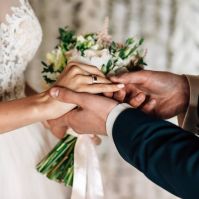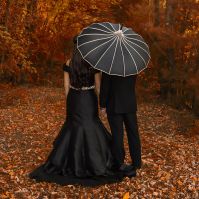A wedding cake isn't just a delicious dessert—it symbolizes tradition, love, and meaning shaped by customs from around the world. Wedding cakes have played an important role in ceremonies for centuries, carrying symbolism and hopes for good fortune, unity, and happiness. Let’s explore some fascinating wedding cake superstitions and traditions embraced by couples globally.
Cutting the Cake Together
In many cultures, cutting the wedding cake symbolizes unity and partnership. In Western weddings, the bride and groom hold the knife together to make the first cut, signifying their commitment. Feeding each other the first slice shows affection and promises mutual care, symbolizing their willingness to support each other throughout their marriage.
Saving the Top Tier
Another popular tradition involves saving the top tier of the cake. Couples often freeze the top layer to enjoy on their first anniversary, a custom dating back to the 19th century. Back then, the top tier was repurposed for the christening of the couple’s first child, symbolizing continuity and the hopes of a growing family.
Today, enjoying the saved cake serves as a sweet reminder of the wedding day and symbolizes good luck for the future. The tradition has evolved to represent enduring love and a hopeful future.
The Charm Pull in the United Kingdom
In the United Kingdom, the "charm pull" tradition incorporates charms attached to ribbons into the cake. Bridesmaids pull the ribbons to reveal charms symbolizing different blessings or predictions. Common charms include:
- Horseshoe: Good luck
- Ring: Marriage is on the horizon
- Heart: A life full of love
This tradition adds fun and excitement to the wedding, especially for those who enjoy playful fortune-telling.
Breaking of the Cake in Ancient Rome
In Ancient Rome, weddings featured a simple barley or wheat cake that the groom broke over the bride’s head to symbolize good fortune and fertility. Guests collected the crumbs as blessings for their own lives, believing that the couple's happiness would extend to them as well.
Though customs have evolved, the idea of bringing good fortune to the marriage remains. Modern couples may engage in playful cake-smashing during their reception, which is believed to bring laughter and joy.
Sleeping Cake in Ireland
In Ireland, single women would sleep with a piece of the wedding cake under their pillow, hoping to dream of their future spouse. Many modern brides share their cake with single friends, adding a whimsical touch to the festivities.
This tradition embodies the spirit of love and connection, extending the joy of the wedding to those who have yet to find their own partners.
Feeding Family in Bulgaria
In Bulgaria, newlyweds feed cake to their parents to symbolize the joining of two families. This practice emphasizes family ties and the support system brought by marriage. Wedding cakes in Bulgaria often include honey to represent a sweet life, and feeding cake to the parents symbolizes gratitude and appreciation for their love and guidance.
Wedding Cakes as a Symbol of Prosperity
Across many cultures, wedding cakes symbolize prosperity, fertility, and good fortune. Elaborate multi-tiered cakes often serve as symbols of abundance and the couple’s aspirations for their future. In some traditions, guests place coins inside the cake batter before baking, believing that whoever finds a coin in their slice will enjoy extra good luck.
Wrapping It All Up
From charm pulls in the United Kingdom to cake-breaking in Ancient Rome, wedding cakes carry traditions that add layers of meaning to the ceremony. These customs may vary, but they all share a common theme: celebrating love, joy, and hope for a prosperous future. Whether you believe in these superstitions or simply love cake, each slice has a story rich with cultural significance and cherished memories.



